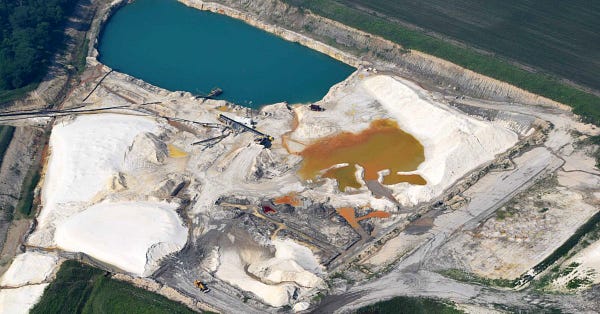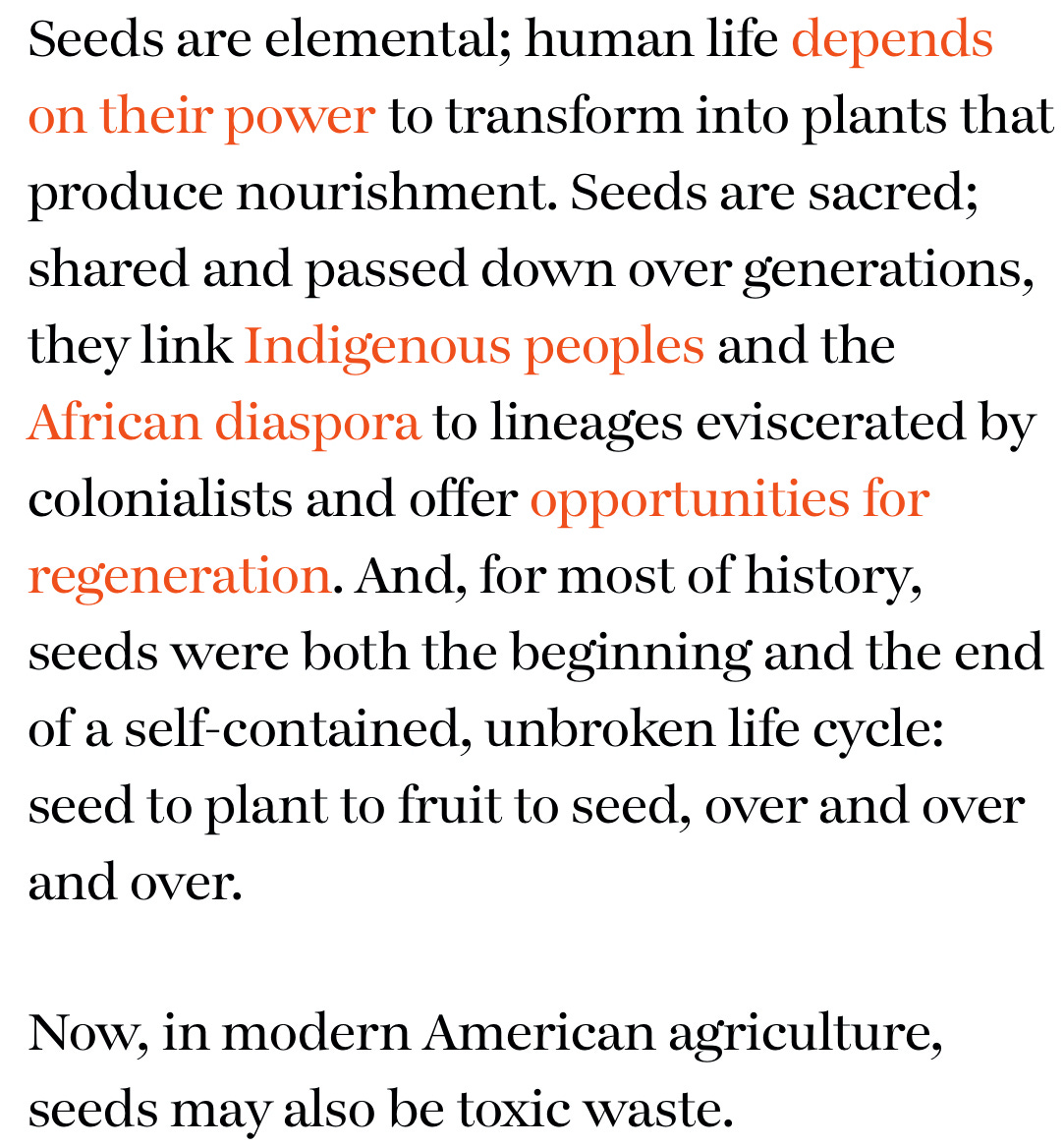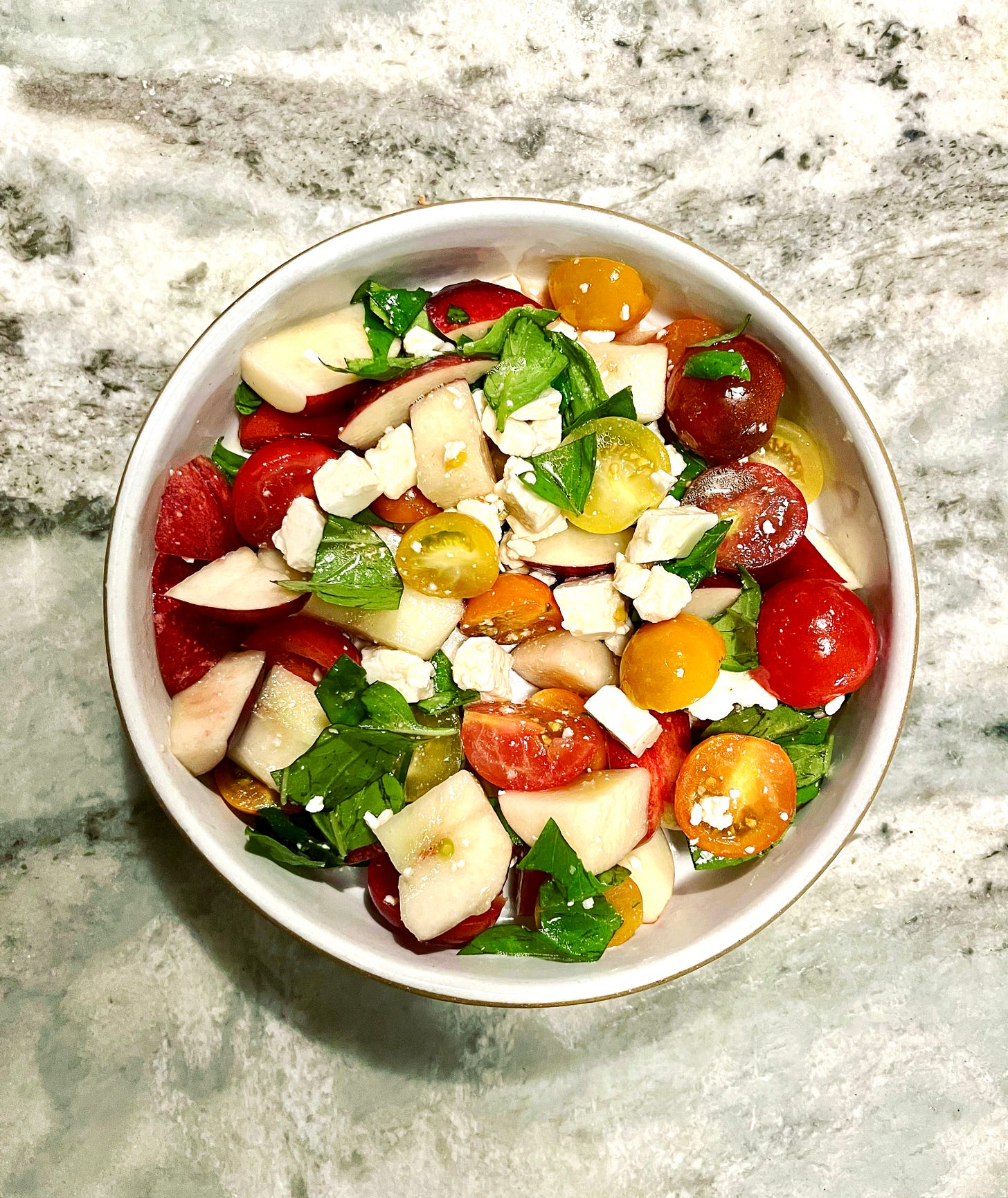Farmland loss, toxic seeds, and all kinds of food news
An update for readers, while Peeled is paused.
Over the past several months, I’ve covered a wide range of food and farm stories. That includes food worker union organizing, sunflower oil supply chains, and a regenerative cattle grazing revival in the Mid-Atlantic.
But the stories I’m most proud of are the result of two in-depth investigations.
First up: From Farmland to Frac Sand


I went through hundreds of pages of documents, made phone calls, and compiled acreage ownership data to get to the number that is now just one small statistic in a long narrative: 9,000 acres.
I sat at the kitchen tables of people in these towns, listening to their experiences. And I stared into the unbelievably massive holes in the earth that were once prairies, and then corn fields.
I use the word “extraction” often to describe reporting I do on how powerful food companies exploit people, communities, and natural resources for profit. But this was the first time I felt the word in my gut, in a visceral, physical way.
Second: When Seeds Become Toxic Waste
This story came out of previous reporting I did the year before, when I wrote about a disaster at a mismanaged ethanol plant in Mead, Nebraska, where seeds coated with pesticides had been used as a raw material. Byproducts of that production, loaded with high levels of those pesticides, were contaminating the surrounding environment. After that, there was a lot of great local reporting on how the contamination was impacting residents and what was going to happen to contain the situation at the site itself.
But I’ve been covering the use and impacts of treated seeds coated with chemicals including neonicitinoids on farm fields around the country for a while, and I knew that these seeds often go uncounted when it comes to measuring pesticide use.
The questions I had were: Was “disposal” another realm in which these potentially toxic seeds were flying under the radar? Why were the big agrichemical companies throwing such high volumes of these seeds away in the first place? And was anyone regulating how they were disposed of? Finally, with the Nebraska plant shut down, where would companies be dumping their excess seed waste?
Finally, I’ve been writing a regular news column dubbed “The Field Report” that provides perspective, analysis, and context to help readers make sense of the most important food system news coming out of Washington, D.C. and around the country. A few times a month, I cover breaking news developments like how important climate reports relate to food and agriculture and lawmakers’ attention to consolidation in the meat industry that hurts farmers and eaters.
That’s it for now. Thanks for staying on this list and for following my work, even while Peeled is not being published.
Currently devouring
Hooked. I was riveted by this investigation, produced by The New Bedford Light and ProPublica, of how private equity has reshaped the fishing industry. Just like in other sectors of the food system like chicken or grocery, Big Money comes in and figures out a way to squeeze the people doing the actual work (in this case, the fishermen) and gobble up the profits.
“Good Food.” I bookmarked this essay the food writer Alicia Kennedy published in June. If you’ve ever wrestled with the moral implications of ethical food choices, accessibility of healthy food, and the way food media outlets treat (or ignore) coverage of food system issues, it is worth a read. Even if you haven’t, it’s worth reading! It’s filled with critical questions that all of us who care about justice (food or otherwise) should consider. “Why is it bougie to talk about local food and food policy but not to endlessly, breathlessly cover restaurants and cocktail trends? What is alienating, and for whom?”
Actually eating
For me, summer cooking in Baltimore means repeatedly making pesto, simple tomato sandwiches for lunch, and dinners that are planned to accomodate farm bounty. Our dinner conversations often start with checking which fresh vegetables from the market are left in the fridge (squash? beans? tomatoes? eggplant? all of the above?) and then deciding whether they would work better in a stir-fry, pasta, or salad.
Here’s a simple salad I made with cherry tomatoes, peaches, basil, and feta.
Let’s be friends
Follow me on Twitter and Instagram to continue the conversation.





